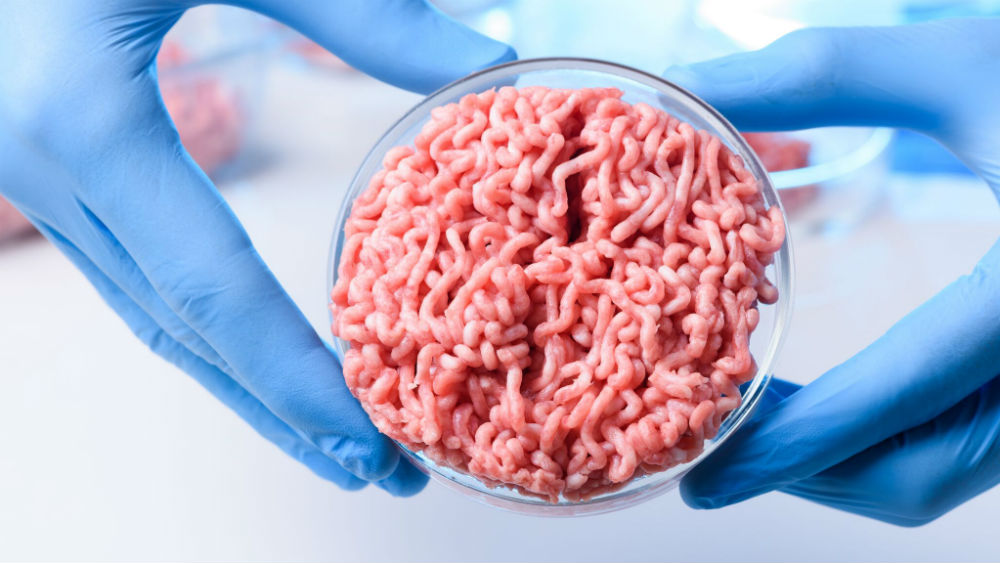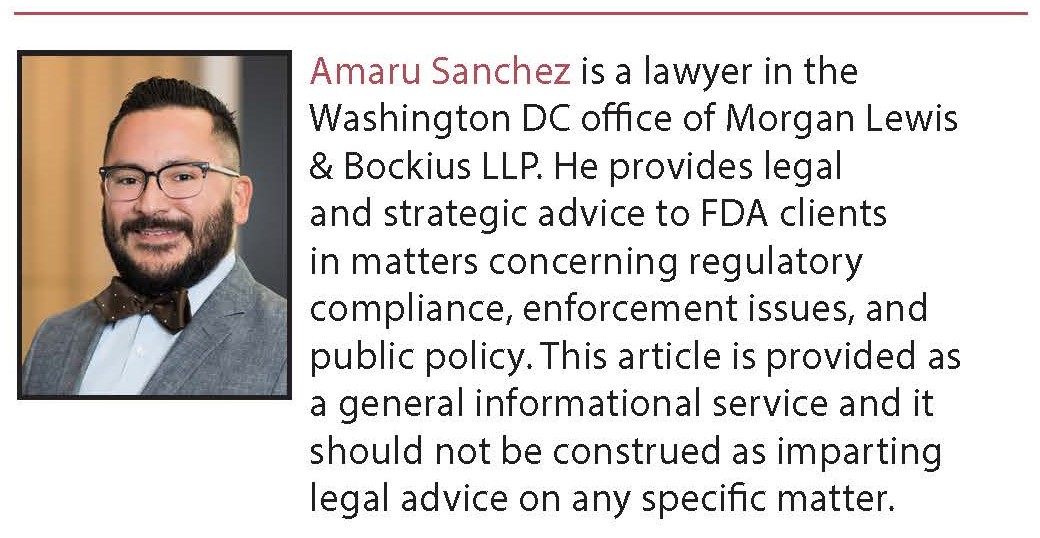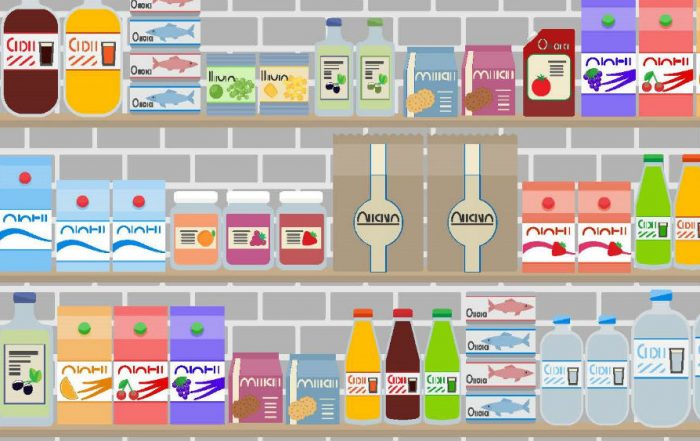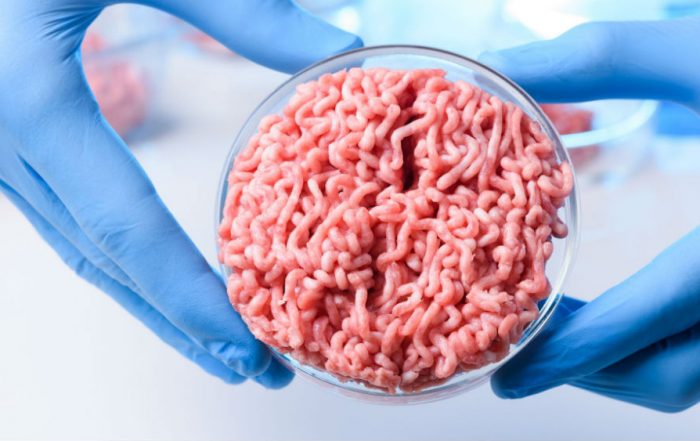
Laws and Regulations Concerning Cell-Cultured Meat and Cellular Agriculture
by Amaru Sanchez
In almost any area where an emerging technology intersects with a highly regulated industry, there is a dynamic of entrepreneurial spirit facing the realities of existing regulatory burdens. One novel product that is facing this dilemma is “cell-cultured meat” (CCM) or meat grown in a cell culture instead of from an animal.1 Cell-cultured meat is part of a new and emerging area of biotechnology known as “cellular agriculture”2 that entails producing agricultural products from the cellular level as opposed to the whole plant or animal. Proponents of cellular agriculture highlight the process as creating a more sustainable, efficient, and predictable food supply.3 The National Academies of Sciences (NAS) estimates products of cellular agriculture will be in the marketplace within the next five years.4
Products of cellular agriculture will test the current regulatory system’s reliance on products fitting neatly into statutory and regulatory definitions. For instance, CCM most likely is not a “meat product” as defined in the Federal Meat Inspection Act (FMIA) because FMIA assumes a meat food product is derived from a carcass.5 If FMIA is not applicable, another regulatory scheme is needed to ensure the safety of CCM for consumption, as well as the process for reviewing the product and its labeling.
The remainder of this article is organized in three parts. First, we will briefly discuss most of the relevant statutory authorities and regulatory programs administered by two agencies that regulate food products: United States Department of Agriculture (USDA) and FDA.6 Next, we will apply these authorities and programs to CCM and assess the result. Finally, we will provide some predictive analysis of what the industry can expect as a regulatory paradigm for cell-cultured meat as well as other novel food products of biotechnology.
Current Statutory Authorities and Regulatory Programs for Human Food
United States Department of Agriculture
The Federal Meat Inspection Act (FMIA) ensures that the United States’ commercial supply of meat and meat products is safe, wholesome, and correctly labeled.7 Some of the major provisions of FMIA include mandatory inspection of livestock before slaughter; mandatory postmortem examination of carcasses; labeling requirements for meat and meat products; sanitary standards for slaughterhouses and meatpacking establishments; and ongoing inspection of slaughterhouses and meatpacking establishments.8
Under FMIA, the term “meat food product” is defined as:
[A]ny product capable of use as human food which is made wholly or in part from any meat or other portion of the carcass of any cattle, sheep, swine, or goats, excepting products which contain meat or other portions of such carcasses only in a relatively small proportion or historically have not been considered by consumers as products of the meat food industry, and which are exempted from definition as a meat food product by the Secretary under such conditions as he may prescribe to assure that the meat or other portions of such carcasses contained in such product are not adulterated and that such products are not represented as meat food products. This term as applied to food products of equines shall have a meaning comparable to that provided in this paragraph with respect to cattle, sheep, swine, and goats.9
The USDA’s Food Safety and Inspection Service (FSIS) is the regulatory division charged with implementing FMIA by inspecting meat and other animal products moving in interstate commerce.10 The FSIS inspects the meat to ensure that it is not adulterated or misbranded and thus prohibited for sale in interstate commerce.11
U.S. Food and Drug Administration
The other major player in the food regulatory space is FDA, which draws its regulatory authority from the Federal Food, Drug, and Cosmetic Act (FDCA).12 With a few exceptions such as food additives, the FDCA authorizes FDA to regulate food through postmarketing mechanisms such as inspections, testing, and enforcing adulteration and misbranding standards and good manufacturing practices. The Center for Food Safety and Applied Nutrition (CFSAN) is the division within FDA tasked with ensuring that the nation’s food supply is safe, sanitary, wholesome, and honestly labeled.13
As it concerns food additives, FDCA section 409 requires premarket approval of any food additive. Use of an unapproved food additive renders the food unsafe and subject to the adulteration provisions in FDCA section 402. A food additive is generally defined as any substance that is intentionally added to a food, unless the substance is generally recognized as safe (GRAS) for the intended use or is otherwise excluded.14 For a substance to be GRAS under the conditions of its intended use, two criteria must be met:15
1. The use of the substance must meet the same safety standard as a food additive: there must be a reasonable certainty of no harm under the conditions of its
intended use; and
2. The use of the substance must meet the general recognition standard: the intended use of the substance in food must be recognized as safe by qualified experts based on publicly available scientific information.
One method that proponents of a substance may use to establish that their substance is GRAS is through the use of a “GRAS panel.” A GRAS panel is a group of qualified scientific experts who independently evaluate whether the available scientific data, information, and methods establish that a substance is safe under the conditions of its intended use in human food or animal food as part of an evaluation of whether adding that substance to food is lawful under the GRAS provision of the FDCA.
Applying the Current Statutory Authorities and Regulatory Programs to Cell-Cultured Meat
Federal Meat Inspection Act
As stated at the outset, CCM most likely does not fall within the current definition of “meat product” in the FMIA because the food product, the “meat,” is not “made wholly or in part from any meat or other portion of the carcass of ny cattle.”16 Emphasis added. Instead the meat is grown in a cell culture, and thus, there is a complete absence of a carcass. Does this technical absence of a carcass completely put the CCM outside the scope of the FMIA?
An argument can be made that the FMIA is applicable because the inherent characteristic of CCM is, at the cellular level, actual meat and, as a result, the source or stage of development of the product (i.e., whole animal versus cell culture) should not be the focus for establishing regulatory authority.
The FSIS can also look to portions of the “meat food product” definition for establishing jurisdiction; specifically, the portion discussing exempting from the definition products that “historically have not been considered by consumers as products of the meat food industry” and “are not represented as meat food products.”17 Emphasis added. The logical inverse of this latter portion of the “meat food product” definition would suggest that a product that consumers do perceive as a product of the meat industry and/or is represented as meat food products is within the scope of FMIA. In this case, unlike other products currently on the market that mimic the appearance and taste of meat, but neither are meat nor marketed as a meat food product, CCM is uniquely distinguishable at the cellular level, because it is actual meat, and would likely, and could properly, be marketed as such.
Thus, a case could be made that FMIA applies to CCM and will be regulated under its authority. Of course, given that facilities producing CCM are drastically different from traditional slaughterhouses, FSIS would likely need to increase its scientific capabilities, tools, expertise, and inspection process, in order to adequately apply the aforementioned inspection and oversight provisions of FMIA to CCM facilities.
Federal Food, Drug, and Cosmetic Act
However, for the purposes of discussion, if FMIA is inapplicable to CCM, it is likely FDA’s broad authority to regulate conventional foods as well as FDA’s Biotechnology Policy (Policy) would apply.18 FDA’s Biotechnology Policy was developed to address questions FDA had been receiving concerning food products developed using novel tools of biotechnology.19 While the Policy focuses on foods derived from new plant varieties developed by the newer methods of genetic modification, the agency’s analysis of its regulatory authority over nontraditionally grown products may provide a roadmap for a product such as CCM. For instance, the Policy states:
The regulatory status of a food, irrespective of the method by which it is developed, is dependent upon objective characteristics of the food and the intended use of the food (or its components). The method by which food is produced or developed may in some cases help to understand the safety or nutritional characteristics of the finished food. However, the key factors in reviewing safety concerns should be the characteristics of the food product, rather than the fact that the new methods are used.20
As a result of the 1992 Policy, FDA developed a voluntary consultation process by which food producers may consult with the agency when there is a question about a food’s regulatory status.21 Under FDA’s consultation process, a developer who intends to commercialize a food within the scope of the Policy will meet with FDA to identify and discuss relevant safety, nutritional, or other regulatory issues regarding the food and then submit to FDA a summary of its scientific and regulatory assessment of the food.22
In this case, if FMIA is inapplicable, and if CCM is sold as a food product, the broad authority granted by Congress to FDA over conventional foods would likely apply. Additionally, it would not be difficult for FDA to establish jurisdiction over this product given the agency’s history with food products developed using novel tools of biotechnology discussed above as well as the agency’s recent experience with, and approval of, the first genetically engineered animal intended for food.23 As a result, it would be the responsibility of CCM producers to evaluate the safety of the food and ensure that the safety requirement of FDCA section 402 is met.
CCM producers also should be aware of FDA’s broad interpretation of the definition of a food additive and FDCA section 409. Discussed in the Policy, FDA uses its food additive authority to the extent necessary to protect public health, and has indicated that:
The statutory definition of “food additive” makes clear that it is the intended or expected introduction of a substance into food that makes the substance potentially subject to food additive regulation. Thus, in the case of foods derived from new plant varieties, it is the transferred genetic material and the intended expression product or products that could be subject to food additive regulation, if such material or expression products are not GRAS.24
Given that what actually promotes the culturing of cells in CCM is the cell culture medium and cellular growth factors,25 FDA may take a position that these substances are food additives because they are substances that are intentionally added to a food. If FDA takes such a position, it would require the CCM producer to submit a food additive petition for the cell culture medium and cellular growth factors unless they are approved additives or are GRAS. The likelihood of FDA taking such a position is unknown since at one end, it arguably runs counter to FDA’s Biotechnology Policy of not focusing on the method by which the food is produced, but on the other end, the novelty of growing whole foods from a cell culture may cause the agency to revisit this not-looking-at-the-method approach of FDA’s Biotechnology Policy. FDA likely would require some review of the components; however, the issue will be how to streamline the review process to avoid overly burdensome requirements that might impede the incentive for developing the technology.
Looking Forward
According to the NAS, the profusion of biotechnology products over the next five years “has the potential to overwhelm the U.S. regulatory system.”26 As we have just seen, this is partially due to the unique nature of the products and as a result, having few to no currently regulated comparators that can serve as the baseline for regulatory oversight and risk assessment. Thus, while regulatory agencies are expected to enhance their capabilities to meet such challenges, it would also behoove developers of new biotechnology products to be proactive in leading the discussion that will shape the regulatory paradigm for products of biotechnology. Such activities may include drafting policy briefs, working with trade associations, and initiating preliminary discussions with a regulatory agency.
- Paul Shapiro. Lab-Grown Meat Is on the Way. Scientific American (Dec. 19, 2017), https://blogs.scientificamerican.com/observations/lab-grown-meat-is-on-the-way/; see also Beth Kowitt. Silicon Valley and the Search for Meatless Meat. Fortune (Dec. 19, 2017), http://fortune.com/2017/12/19/silicon-valley-meatless-meat/; Datar, I. 2016. Small Business Perspectives from the 501(c)(3) Research Institute Advancing Cellular Agriculture. Presentation to the National Academies of Sciences, Engineering, and Medicine Committee on Future Biotechnology Products and Opportunities to Enhance Capabilities of the Biotechnology Regulatory System, June 27, San Francisco, CA; Shigeta, R. 2016. Indie Bio: New Opportunities, a New Generation of Biotech Entrepreneurs. Presentation to the National Academies of Sciences, Engineering, and Medicine Committee on Future Biotechnology Products and Opportunities to Enhance Capabilities of the Biotechnology Regulatory System, June 27, San Francisco, CA.
- Datar, I. 2016.
- Id.
- National Academies of Sciences, Engineering, and Medicine. 2017. Preparing for Future Products of Biotechnology. Washington, D.C. The National Academies Press. doi: https://doi.org/10.17226/24605.
- 21 U.S.C. § 601(j).
- We understand that ensuring the nation’s food safety is not limited to these agencies; however, for purposes of discussion, this article will focus on USDA and FDA.
- 21 U.S.C. §§ 601-95.
- Id.
- 21 U.S.C. § 601(j).
- USDA, About FSIS (last modified June 2, 2017), https://www.fsis.usda.gov/wps/portal/informational/aboutfsis/about-us.
- 21 U.S.C. § 610.
- 21 U.S.C. §§ 321-399h.
- FDA, CFSAN – What We Do (last updated Nov. 15, 2017), https://www.fda.gov/AboutFDA/CentersOffices/OfficeofFoods/CFSAN/WhatWeDo/default.htm.
- Section 201(s) of FFDCA.
- 21 C.F.R. § 170.30.
- 21 U.S.C. § 601(j).
- 21 U.S.C. § 601(j).
- 57 Fed. Reg. 22984 (May 29, 1992).
- Id.
- Id.
- FDA, Consultation Procedures under FDA’s 1992 Statement of Policy – Foods Derived from New Plant Varieties (Oct. 1997), https://www.fda.gov/Food/GuidanceRegulation/GuidanceDocumentsRegulatoryInformation/ucm096126.htm.
- Id.
- FDA, AquAdvantage Salmon (page last updated Dec. 1, 2017), https://www.fda.gov/AnimalVeterinary/DevelopmentApprovalProcess/GeneticEngineering/GeneticallyEngineeredAnimals/ucm280853.htm.
- 57 Fed. Reg. 22990.
- Sharma S, Thind S, Kaur A, In vitro meat production system: why and how? Journal of Food Science and Technology, 2015, 52(12):7599-7607; doi:10.1007/s13197-015-1972-3.
- National Academies of Sciences, Engineering, and Medicine (2017), Preparing for Future Products of Biotechnology. Washington, D.C. The National Academies Press. doi: https://doi.org/.
Update Magazine
January/February 2018





